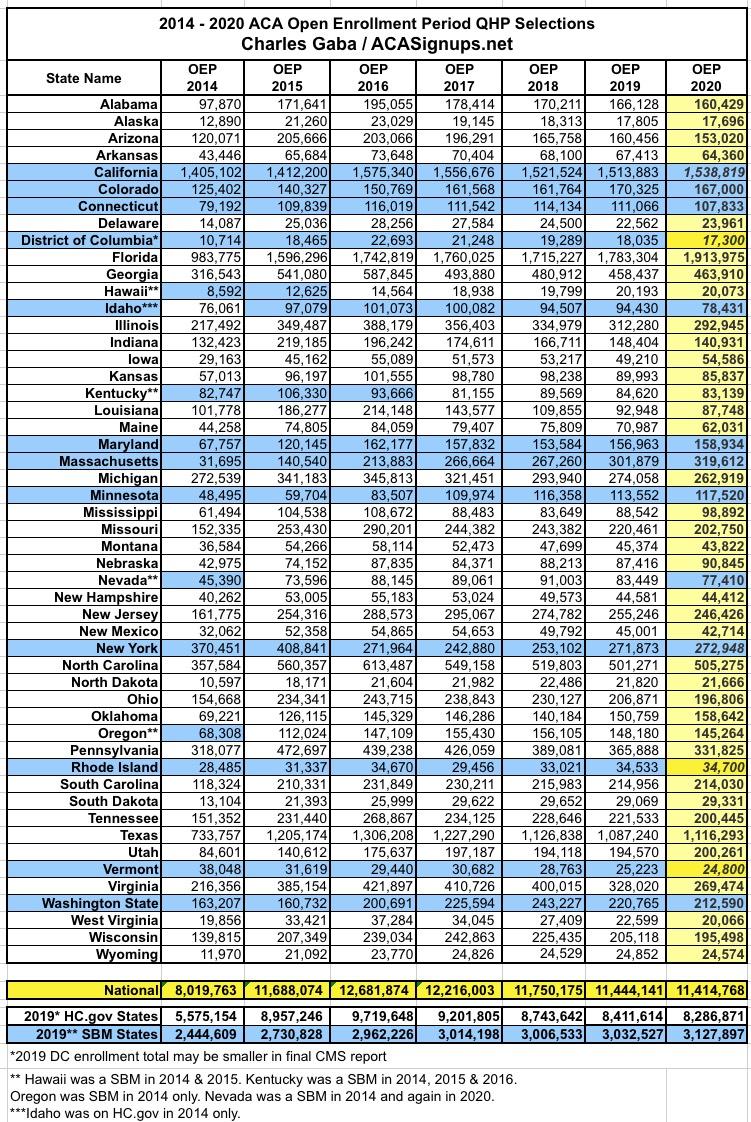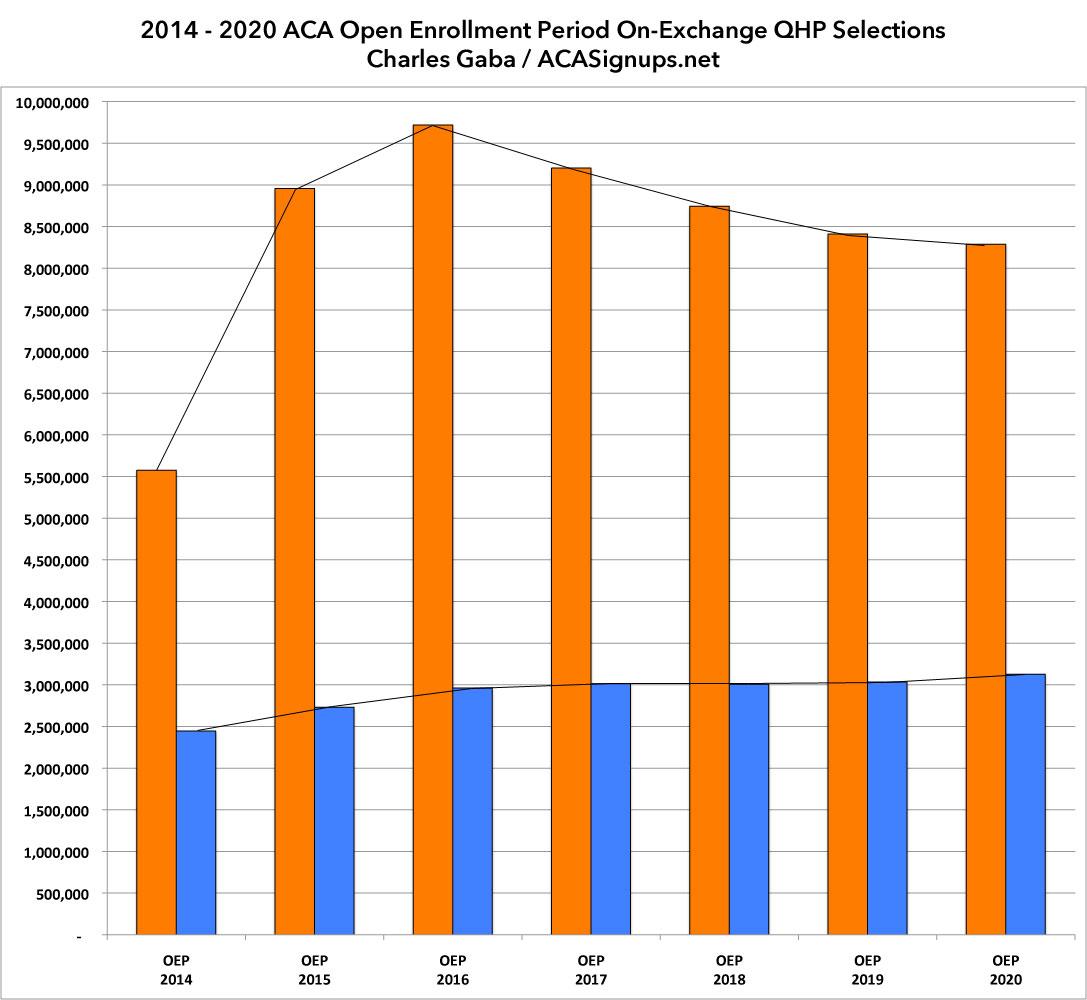Quick Reminder: SBMs are STILL outpacing the FFM
I realize this may seem more than a little trite given the ongoing and everpresent COVID-19 pandemic...and it might be particularly so given that a dozen state-based ACA exchanges have just launched Special Enrollment Periods to help address the crisis (with HealthCare.Gov likely to follow them any day now).
Even so, the 10th Anniversary of the signing of the Patient Protection & Affordable Care Act is coming up this Monday, so I figured I should take a moment to note the continuing trendline between the Federally Facilitated Marketplace (FFM) (HealthCare.Gov) and the State-based Marketplaces (SBMs). There have been as many as 15 or as few as 12 depending on the year.
The first table below lists the official number of Qualified Health Plans which were selected by Americans during the official Open Enrollment Periods for the first seven years they've occured. The blue cells represent states which operated their own full SBMs that year. This has changed over the years as follows:
- Hawaii was an SBM in OEPs 2014 & 2015; it's been part of the federal exchange since OEP 2016.
- Idaho was on the federal exchange in OEP 2014 only; it's been a full SBM since OEP 2015.
- Kentucky was an SBM in OEPs 2014 - 2016; it's been hosted by the federal exchange since OEP 2017.
- Nevada was an SBM in OEP 2014, then switched to the federal exchange for OEPs 2015 - 2019 before switching back to a SBM for OEP 2020.
- Oregon was an SBM in OEP 2014; it's been hosted by the federal exchange since OEP 2015.
For OEP 2020, the numbers listed are official for all FFM states and for most SBM states. In a few SBM cases the numbers are estimates extrapolated from incomplete data, but should be very close to whatever the final, official number reported by the Centers for Medicare & Medicaid end up being.
Due to the above-noted shifting of states between FFM and SBM status, the chart below isn't perfectly representative, but even after correcting for these shifts, the trend is unmistakable: Whle FFM enrollment surged in 2015 and 2016 under the Obama Administration, it has gradually dropped off each year since under the Trump Administration...while enrollment in SBM states has gradually increased each and every year for six years straight:
The only "state shift" which has occured since OEP 2016 is Nevada splitting off of HealthCare.Gov onto their own exchange this year, and even that only made a nominal difference. Even if you disregard Nevada entirely for both OEP 2019 and OEP 2020, the trend for both FFM and SBM bars would be the same, if smaller: The FFM would still have dropped by over 41,000 people (vs. 125,000 actual), while the SBM states would still have increased by around 17,000 people (vs. the 95,000 actual).
Assuming the ACA survives the Texas vs. Azar lawsuit into 2021, three more states plan on following Nevada's lead and splitting off of the federal exchange onto their own this fall: New Jersey, New Mexico and Pennsylvania. Collectively, these three states represent around 5.4% of all ACA exchange enrollees.
How to support my healthcare wonkery:
1. Donate via ActBlue or PayPal
2. Subscribe via Substack.
3. Subscribe via Patreon.





